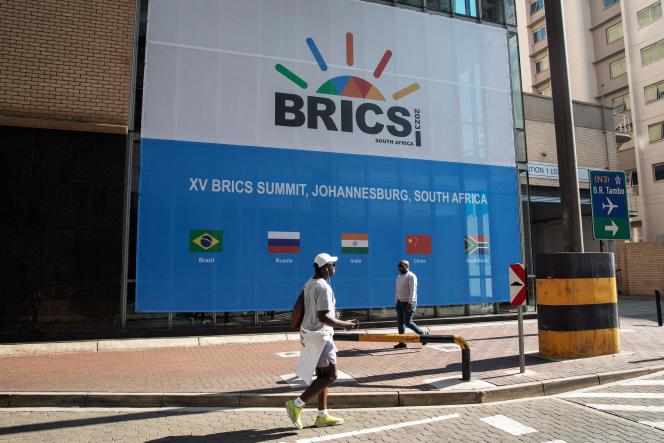Dethrone the king dollar, symbol of Western hegemony. As ambitious as it is complex, this objective will be one of those discussed at the BRICS summit (Brazil, Russia, India, China, South Africa), meeting from Tuesday August 22 to Thursday August 24 in Johannesburg, South Africa.
The heads of state present – South African President Cyril Ramaphosa, his Chinese counterparts Xi Jinping and Brazilian counterparts Luiz Inacio Lula da Silva, Indian Prime Minister Narendra Modi and Russian Foreign Minister Sergei Lavrov – will also discuss the expansion of their bloc to other countries, particularly in Africa.
In recent months, Western sanctions imposed on Russia – freezing of central bank dollar reserves, exclusion of Russian banks from the international Swift interbank communication network, ban on oil imports from Moscow… – have revived the interest of many emerging countries for “de-dollarization”.
A limited effect
“Some seek first to reduce the use of the dollar in their own economy to protect themselves from international financial turbulence”, explains Zongyuan Zoe Liu, author of a study on the subject for the Council on Foreign Relations, an independent American think tank. Others wish to escape the extraterritoriality of United States law, which uses the dollar to impose sanctions and fines abroad.
“How come the dollar comes into play in trade between Kenya and Djibouti? »asked the Kenyan President, William Ruto, on June 14, before the Parliament of Djibouti. “Why does Brazil need the dollar to trade with China and Argentina? We can do it in our own currency”, echoed the Brazilian Lula on August 3, pleading for the creation of a common currency between the BRICS.
Since the start of the war in Ukraine, initiatives to reduce the use of the greenback have multiplied. Russia now sells its hydrocarbons to Beijing in renminbi. In January, it connected its interbank messaging system to Iran’s, allowing banks in the two countries to exchange money without going through Swift. In the spring, China, which is also developing a competitor to Swift (the China International Payment System, CIPS), bought LNG from the United Arab Emirates in yuan.
For the moment, these measures have a limited effect. Admittedly, the weight of the greenback in the reserves of central banks is declining: it is now 59%, compared to 65% in 2016, according to the International Monetary Fund (IMF). But the dollar still weighs 89% of transactions on the foreign exchange market, 60% of trade billings, and 48.5% of international bond issues – 10 points more than in 2003. “If we observe a slight decline of the greenback in the reserves of monetary institutions, its hegemony remains undisputed in other areas”summarizes Chris Turner, economist at ING.
You have 53.21% of this article left to read. The following is for subscribers only.
